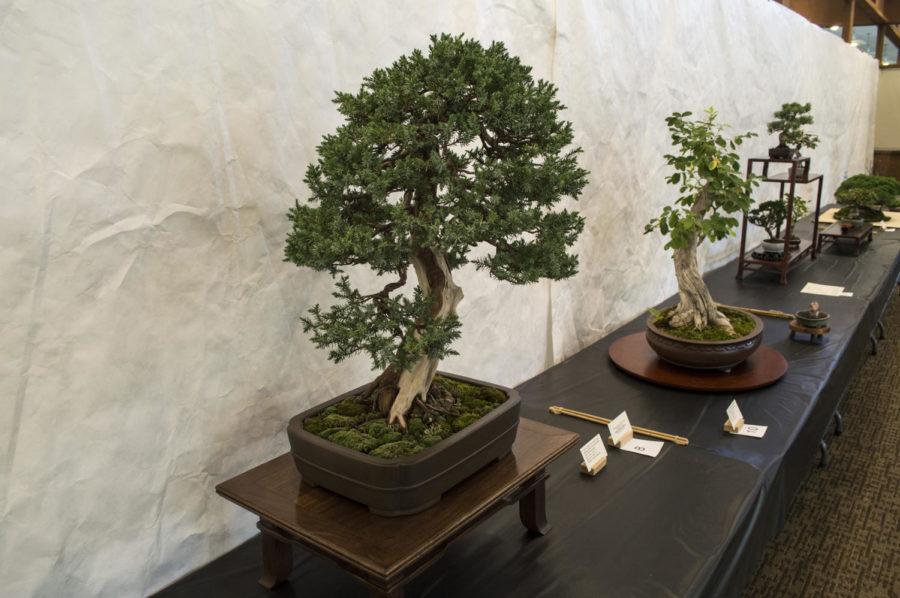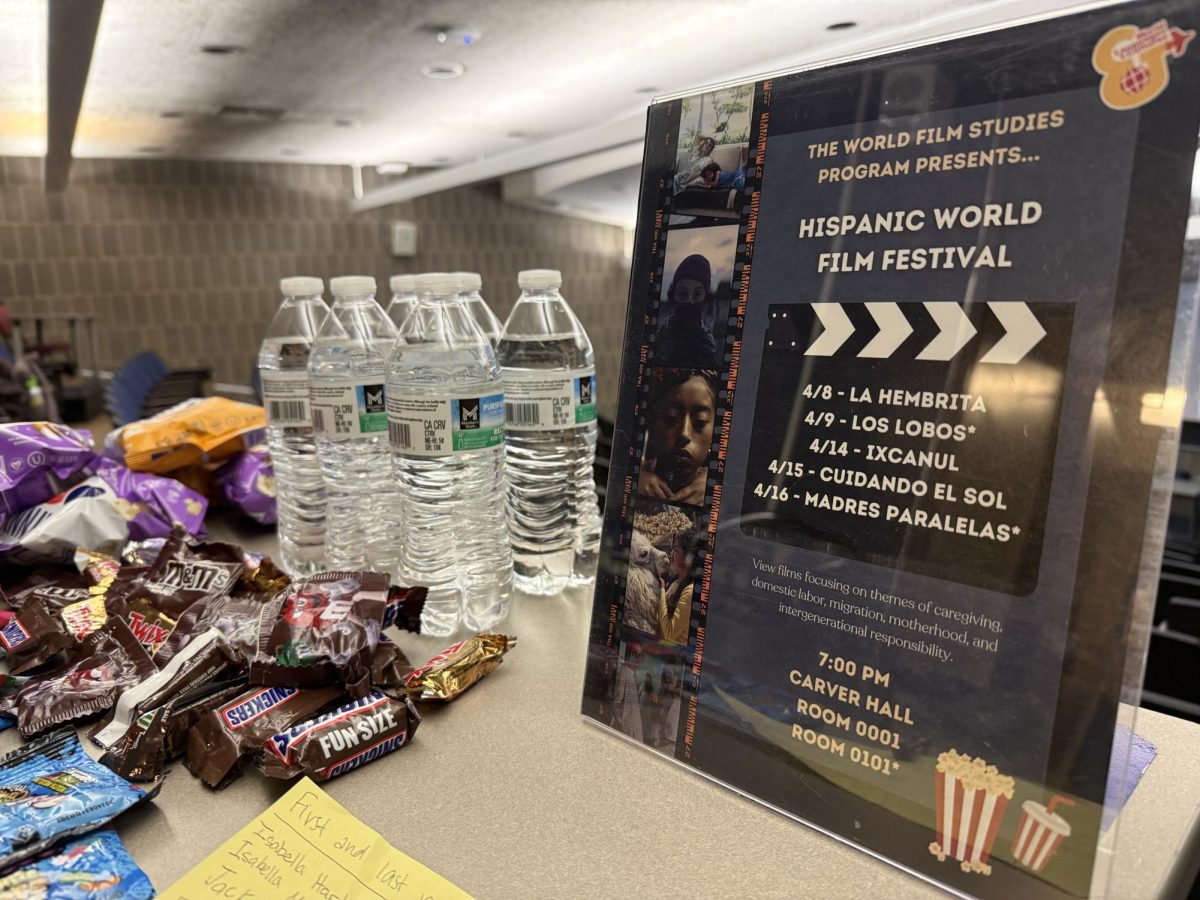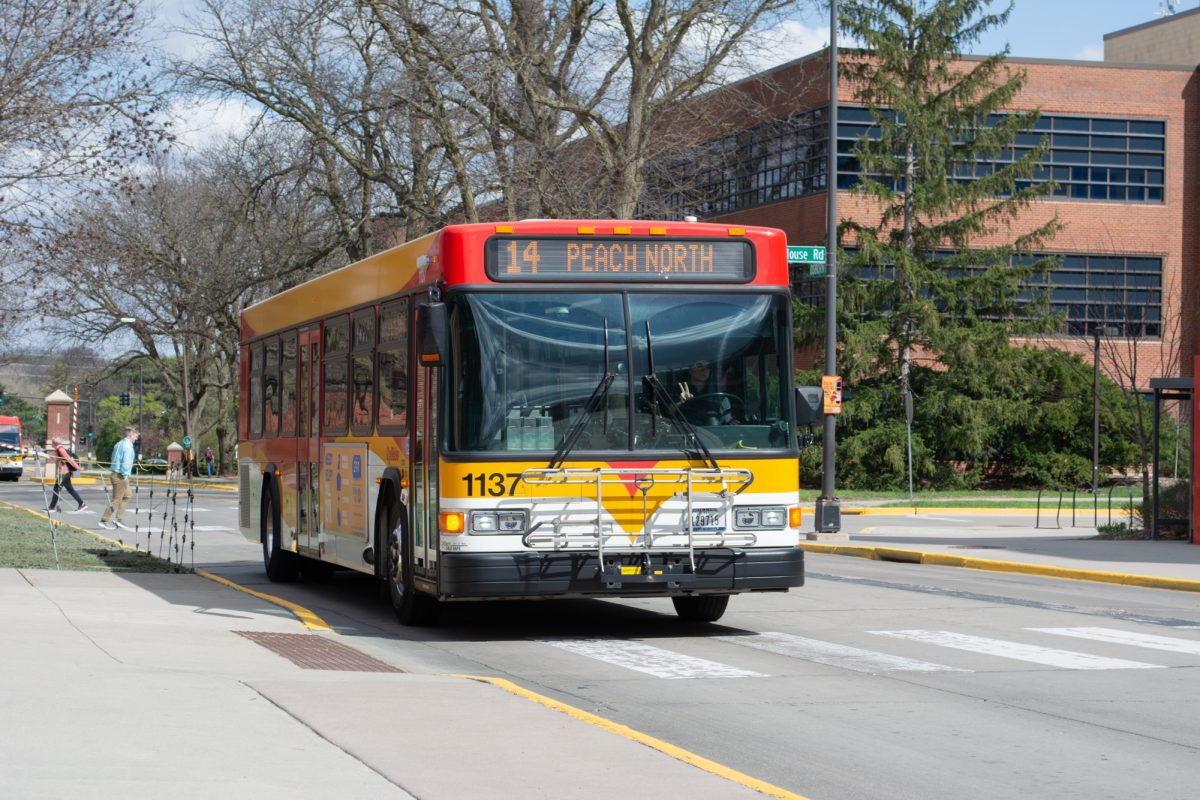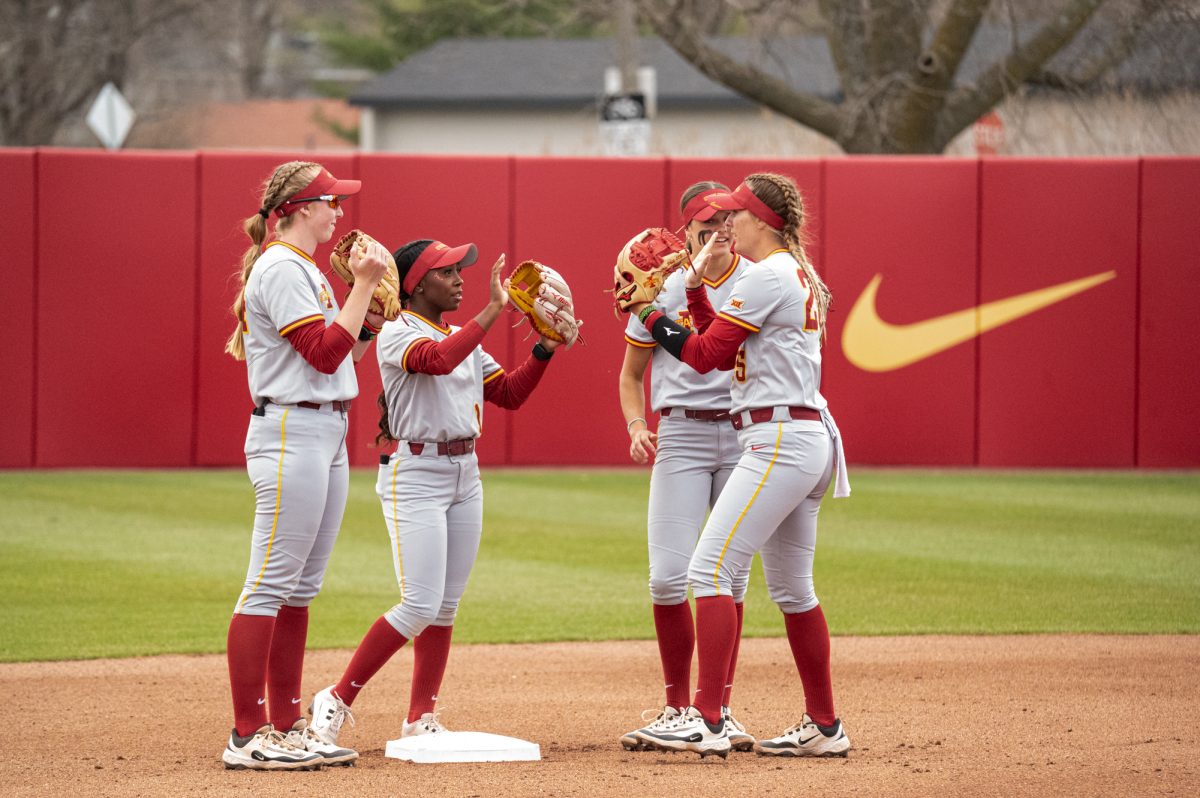Reiman Gardens hosts Bonsai Tree show
October 6, 2014
If there’s anything to know about bonsai, it’s that less is more.
Ivan Hanthorn, a member of the Iowa Bonsai Association, gave a presentation on bonsai trees Oct. 4 and 5 at Reiman Gardens focusing particularly on forests or group plantings, which was the theme for this year’s annual show.
Hanthorn said that despite bonsai’s natural look the Japanese art form is actually very much a man-made beauty.
“First of all, bonsai is not the tree,” Hanthorn said. “A bonsai is a tree in a pot. It’s that unity. You’re not looking at something natural, you’re creating the look. It’s totally synthetic. But when it succeeds it looks totally natural.”
Because his mother worked in a floral shop, Hanthorn grew up in the greenhouse business and was able to accompany her to floral design school.
“When I finally began to look at bonsai seriously, I had already done all the background work,” Hanthorn said. “Then it took off fast. I didn’t really get into torturing the little trees until about 15 years ago, but I’ve been serious about it ever since.”
Hanthorn described each bonsai as having kinetic motion, with each plant having its own flow or shape created by the plant for the eyes to follow.
Almost all of the bonsai in the show were accompanied by “companion material,” which consists of either a viewing stone, a small sculpture or a miniature plant. Each bonsai was separate from each other, with a white, crinkled backdrop to allow the viewer to focus only on the art form in front of them.
“With very little, you are suggesting something that should seize the mind [so] that it takes you someplace you’ve been in your dreams or reality,” Hanthorn said. “If it doesn’t do that, it hasn’t worked.”
Beth Wessel-Kroeschell, event coordinator for Reiman Gardens, wants students to know that admission to the gardens for students is always free, and she encourages them to take advantage of the space to see shows or even just to study.
“We do this every year because it’s garden related and we like to work in conjunction to local groups that have similar goals or can work with us to bring people to the gardens to see something different,” Wessel-Kroeschell said.
Evangeline Behling, third year in veterinary medicine, said she comes to the gardens frequently and likes to attend events they hold when she has time.
“I came because I needed a study break and didn’t know anything about bonsai,” Behling said. “I didn’t realize how everything ties together and that the bonsai has a flow.”
For Hanthorn bonsai isn’t just a hobby; it’s a passion. He says that bonsai is something he will never get tired of.
“Sometimes, I can’t tell the difference between five minutes and ten hours,” Hanthron said. “I get lost in the trees. In the end, it’s just me and the bonsai.”
Wessel-Kroeschell said bonsai is something that is inspiring to both those heavily invested and those who are experiencing it for the first time.
“We think students are inspired by bonsai and it’s kind of something we think students would really enjoy,” Wessel-Kroeschell said. “I think it’s inspiring and it certainly has enriched the lives of all the people who do it.”







